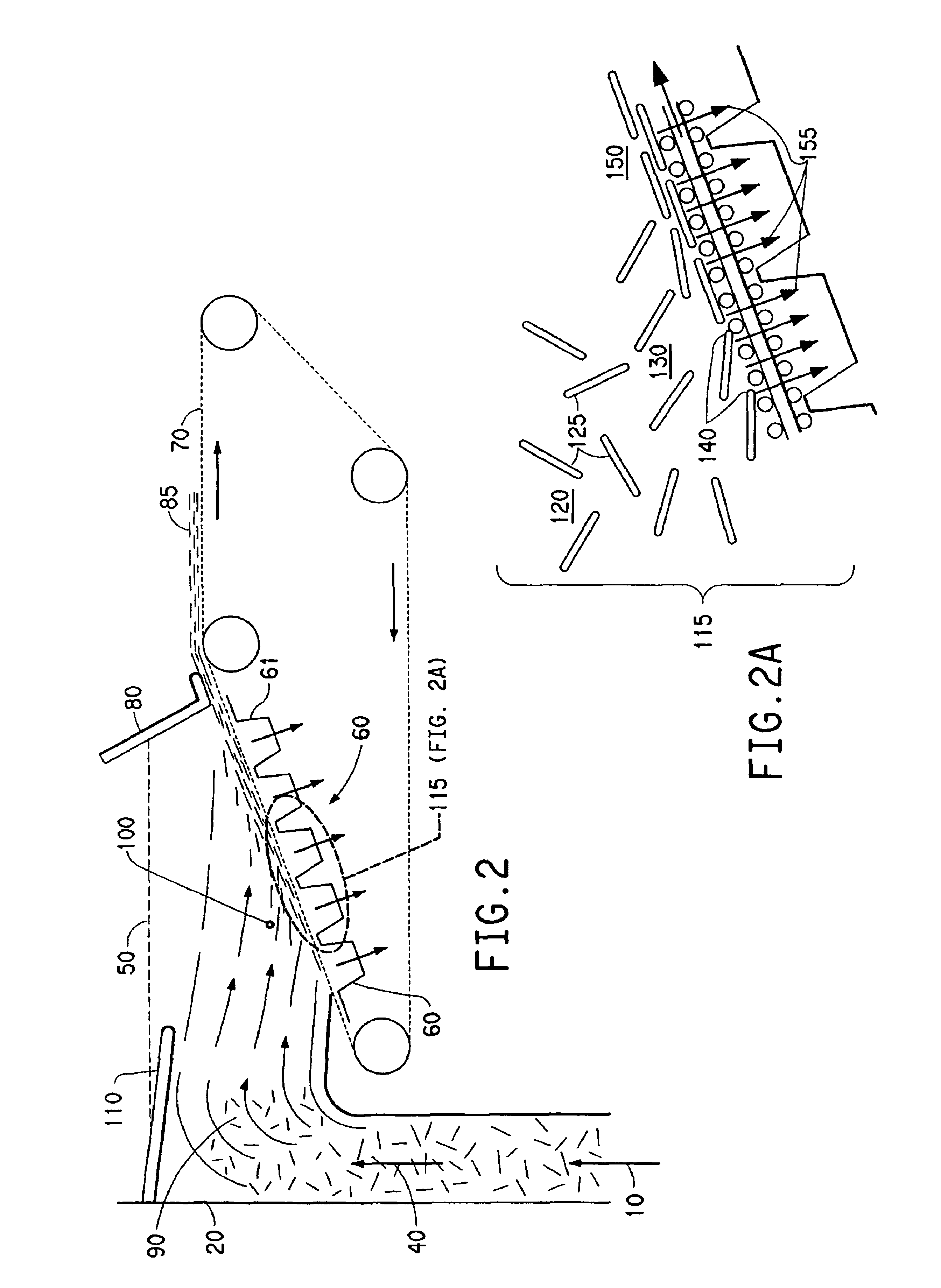Highly-oriented fibrous mats
a high-oriented, fibrous material technology, applied in papermaking, non-fibrous pulp addition, weaving, etc., can solve the problems of reducing the strength of transverse (cross-machine) mats, prior attempts to produce a greater than 90% wetlay orientation, and prior attempts to not readily lend themselves to retrofitting existing machinery
- Summary
- Abstract
- Description
- Claims
- Application Information
AI Technical Summary
Benefits of technology
Problems solved by technology
Method used
Image
Examples
Embodiment Construction
With reference to FIG. 1, a wet laying process used in an embodiment of the present invention is shown. The process utilizes paper making equipment which may include a pulper 1, a transfer pump 2, an agitated supply tank 3, the headbox 4 of an inclined wire paper machine 5, a suction box 11, a dewatering section 6, and a windup or driven spool 7. In operation, reinforcement fibers and thermoplastic fibers are dispersed in water in pulper 1. The slurry is transferred via a pump 2 from the pulper to an agitated supply tank 3. Feed stock from the supply tank is then pumped to the headbox 4. Dilution water is added from tank 8 to the feed line before the headbox 4 to reduce stock consistency. The slurry is drained through the wire by suction box 11 and forms a mat 9 which is dewatered by passing over suction slots 6 in the dewatering section. The dewatered sheet is then wound in damp form on driven spool 7. The sheet 9 wound on the spool 7 is unwound in layers and dried. Alternatively, ...
PUM
| Property | Measurement | Unit |
|---|---|---|
| Viscosity | aaaaa | aaaaa |
| viscosity | aaaaa | aaaaa |
| length | aaaaa | aaaaa |
Abstract
Description
Claims
Application Information
 Login to View More
Login to View More - R&D
- Intellectual Property
- Life Sciences
- Materials
- Tech Scout
- Unparalleled Data Quality
- Higher Quality Content
- 60% Fewer Hallucinations
Browse by: Latest US Patents, China's latest patents, Technical Efficacy Thesaurus, Application Domain, Technology Topic, Popular Technical Reports.
© 2025 PatSnap. All rights reserved.Legal|Privacy policy|Modern Slavery Act Transparency Statement|Sitemap|About US| Contact US: help@patsnap.com



